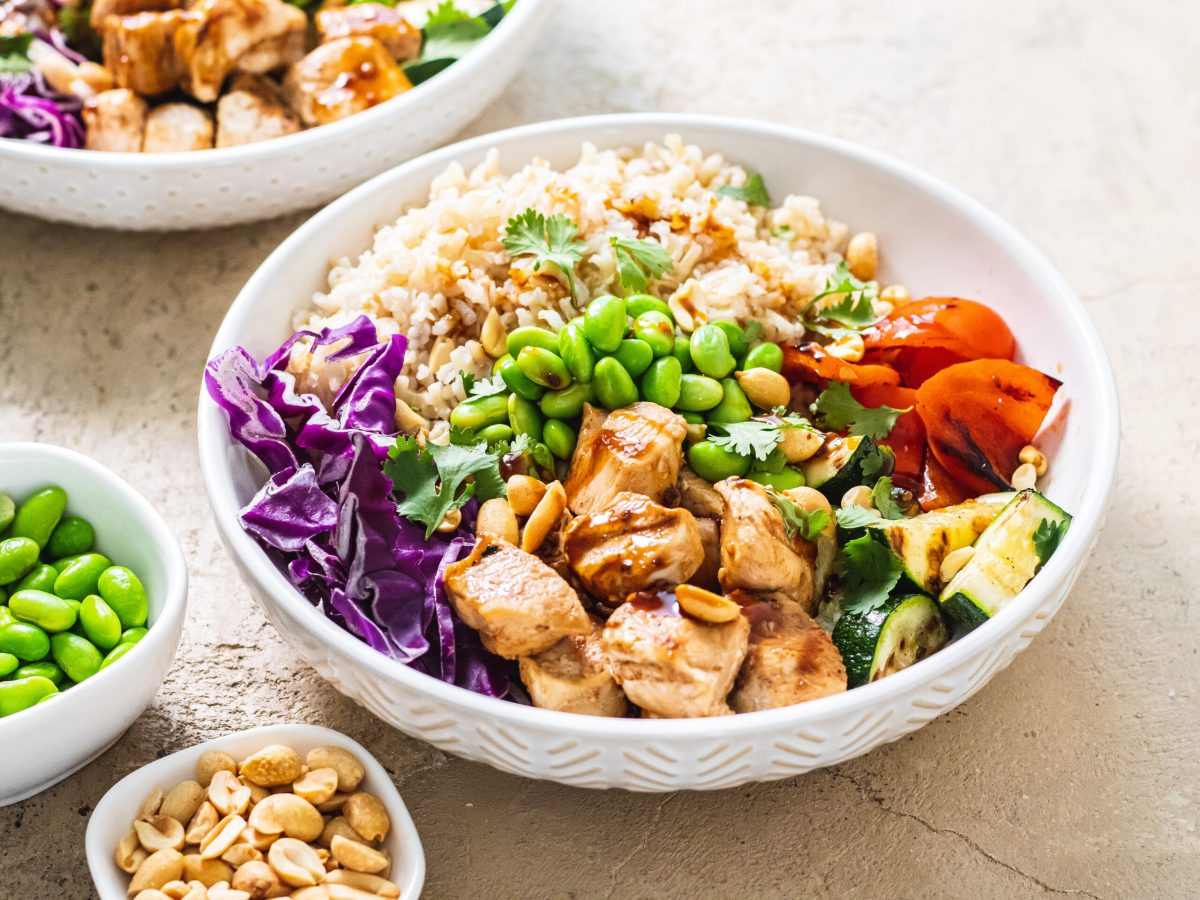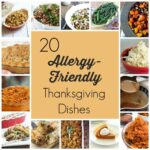Discover the vibrant world of nut-free lunch bowls designed to fuel your afternoon with sustained energy. These aren’t your average sad desk lunches; we’re talking about colorful creations bursting with flavor and texture, carefully crafted with ingredients chosen for their ability to provide a steady release of energy, keeping you focused and productive throughout the day. Forget the afternoon slump – these bowls are your secret weapon against midday fatigue.
We’ll explore a variety of delicious and visually appealing recipes, focusing on ingredient selection, nutritional benefits, and creative presentation techniques. Whether you’re a vegetarian, vegan, or simply seeking nut-free options, we’ll provide adaptable recipes and helpful tips to ensure you can create satisfying and energizing lunch bowls tailored to your specific dietary needs and preferences. Prepare to be inspired by the possibilities!
Ingredient Selection for Energizing Nut-Free Bowls

Crafting vibrant and energizing lunch bowls without nuts requires careful consideration of ingredients that provide a balanced mix of macronutrients for sustained energy throughout the afternoon. The key is to combine complex carbohydrates for slow-release energy, lean protein to keep you feeling full and satisfied, and healthy fats for satiety and nutrient absorption. This approach prevents energy crashes and promotes a productive afternoon.
High-Energy Ingredients Categorized by Macronutrient
The following ingredients offer a diverse range of nutrients to fuel your afternoon. Choosing a variety from each category ensures a well-rounded and energizing meal.
- Protein:
- Chickpeas: These legumes are packed with protein and fiber, promoting satiety and slow digestion for sustained energy release. Their earthy flavor adds depth to bowls.
- Lentils: Another excellent source of plant-based protein and fiber, lentils are incredibly versatile and can be added to salads, stews, or grain bowls. Their subtle flavor complements many ingredients.
- Tofu: A versatile soy-based protein source, tofu absorbs flavors beautifully and adds a soft, satisfying texture. It’s a good source of iron and other essential minerals.
- Tempeh: Fermented soybeans, tempeh offers a slightly firmer texture than tofu and a nutty (but nut-free!) flavor. It’s rich in protein and probiotics for gut health.
- Edamame: Young soybeans, edamame are a delicious and convenient source of protein and fiber. Their vibrant green color adds visual appeal to any bowl.
- Carbohydrates:
- Quinoa: A complete protein source among grains, quinoa offers a fluffy texture and a mild flavor that pairs well with various ingredients. It’s rich in fiber and provides sustained energy.
- Brown Rice: A whole grain rich in fiber, brown rice provides a steady release of energy and adds a hearty base to your bowl. Its slightly nutty flavor is versatile.
- Sweet Potatoes: These root vegetables are packed with complex carbohydrates, providing sustained energy and a good source of Vitamin A. Their sweetness adds a touch of natural flavor.
- Fats:
- Avocado: Creamy and rich in healthy monounsaturated fats, avocados add a luxurious texture and provide satiety. They also contribute essential fatty acids and fiber.
- Sunflower Seeds: A good source of healthy fats and Vitamin E, sunflower seeds add a pleasant crunch and boost the nutritional value of your bowl. (Remember to check for cross-contamination if you have severe allergies).
Comparison of High-Protein, Nut-Free Options
Choosing the right protein source is crucial for sustained energy. Let’s compare two popular options: chickpeas and tempeh.
- Chickpeas: Advantages include affordability, ease of preparation (canned or cooked from dry), high fiber content, and versatility. Disadvantages include a slightly blander flavor compared to tempeh, which might require stronger spices or sauces to enhance the taste. They can also be a bit harder to digest for some individuals.
- Tempeh: Advantages include a more complex and savory flavor profile, higher protein density than chickpeas, and a firmer texture that holds its shape well in bowls. Disadvantages include a slightly higher cost and potential unfamiliarity for some people. It requires cooking before consumption.
Creative Presentation of Nut-Free Lunch Bowls
The visual appeal of a lunch bowl significantly impacts its enjoyment. A thoughtfully arranged bowl is more enticing and satisfying than a haphazardly thrown-together one. By considering color, texture, and ingredient placement, you can transform a simple lunch into a vibrant and appetizing experience. The following examples demonstrate how to elevate your nut-free lunch bowls to a higher level of visual appeal.
Visually Appealing Presentation Techniques
Three distinct approaches can create stunning nut-free lunch bowls. The first focuses on vibrant color contrasts, the second emphasizes textural variety, and the third employs strategic layering for depth and visual interest. Each method enhances the overall sensory experience, making the meal more enjoyable.
Color Contrast and Vibrancy
Imagine a bowl brimming with the deep crimson of roasted sweet potatoes, contrasting sharply with the bright green of spinach and the sunny yellow of cooked quinoa. Scattered throughout are pops of orange from diced bell peppers and the deep purple of shredded red cabbage. The textures are varied—the creamy sweet potato, the slightly crisp spinach, and the fluffy quinoa—but the color scheme creates a dynamic and energetic visual impact. This approach is particularly effective for showcasing the natural beauty of fresh, colorful ingredients. The contrasting colors draw the eye and create an immediate sense of freshness and deliciousness.
Textural Variety and Depth
This approach prioritizes a diverse range of textures to add visual interest. Consider a bowl featuring the smooth, creamy texture of hummus, contrasted by the crunchy bite of roasted chickpeas and the satisfying chew of cooked lentils. Add some shredded carrots for a slightly coarser texture, and top with a sprinkle of toasted pumpkin seeds (ensure they are nut-free, certified if needed) for a delightful contrast. The interplay of textures creates a visually stimulating experience, mirroring the varied sensations experienced while eating. Each bite promises a new and interesting textural encounter, enhancing the overall dining pleasure.
Layering for Visual Depth and Appeal
Layering ingredients strategically adds depth and dimension to your nut-free lunch bowl. Start with a base of cooked brown rice or quinoa, creating a neutral backdrop. Next, layer in vibrant vegetables like chopped bell peppers and shredded carrots, creating a colorful foundation. Then, add a protein source such as grilled chicken or chickpeas, nestled amongst the vegetables. Finally, top with a vibrant green dressing or a sprinkle of herbs for a finishing touch. This layered approach creates a sense of visual progression, inviting the eye to explore the bowl’s contents. The layering also helps to control portion sizes and ensures that all ingredients are visible and accessible. The visual hierarchy enhances the appeal, making the bowl look more substantial and enticing.
Nut-Free Lunch Bowl Variations for Different Dietary Needs
Creating delicious and energizing nut-free lunch bowls is easy, and adapting them to suit various dietary needs is even simpler. This section will explore two specific variations—a vegetarian and a vegan option—highlighting ingredient substitutions and preparation steps. We will also examine how to modify a basic recipe to accommodate gluten-free and dairy-free diets.
Vegetarian Nut-Free Lunch Bowl
This vibrant bowl features a medley of colorful vegetables, protein-rich quinoa, and a zesty lemon-tahini dressing (tahini is naturally nut-free). The hearty quinoa provides sustained energy, while the diverse vegetables offer a spectrum of vitamins and minerals. Imagine a bowl brimming with the jewel-toned hues of roasted sweet potatoes, the deep green of spinach, and the bright orange of bell peppers.
To prepare this bowl, begin by roasting diced sweet potatoes and bell peppers (red and yellow for visual appeal) at 400°F (200°C) for approximately 20 minutes, until tender. While the vegetables roast, cook quinoa according to package directions. Once the quinoa is cooked and the vegetables are roasted, combine them in a bowl. Add a handful of baby spinach for a final burst of freshness and nutrients. For the dressing, whisk together two tablespoons of tahini, one tablespoon of lemon juice, a teaspoon of olive oil, a pinch of salt, and a dash of water to achieve desired consistency. Drizzle the dressing over the bowl and toss gently to coat. The finished product is a symphony of textures and flavors—the soft sweetness of the roasted vegetables, the fluffy quinoa, and the tangy dressing create a harmonious and satisfying meal.
Vegan Nut-Free Lunch Bowl
This vegan variation maintains the vibrant energy boost of the vegetarian bowl but replaces the tahini dressing with a vibrant and tangy sunflower seed dressing. Sunflower seeds offer a comparable nutritional profile to nuts without the allergen risk. The visual appeal remains strong, with a colorful array of vegetables creating an inviting presentation. Imagine the deep crimson of roasted red cabbage contrasting beautifully with the emerald green of edamame and the sunny yellow of corn.
To prepare this bowl, start by roasting diced red cabbage and sweet potatoes at 400°F (200°C) for 20 minutes. While roasting, prepare the edamame according to package directions (either steaming or microwaving). Cook quinoa according to package directions. Once everything is cooked, combine the roasted vegetables, cooked quinoa, and edamame in a bowl. For the dressing, blend together two tablespoons of sunflower seeds, one tablespoon of apple cider vinegar, one tablespoon of water, a teaspoon of maple syrup, and a pinch of salt until smooth and creamy. Drizzle the dressing over the bowl and toss gently to combine. The result is a hearty, flavorful, and visually appealing vegan bowl, bursting with fresh flavors and textures.
Adapting Nut-Free Lunch Bowls for Other Dietary Restrictions
Adapting a basic nut-free lunch bowl recipe to accommodate various dietary restrictions is straightforward. Simple substitutions can easily transform the bowl to meet specific needs.
| Dietary Restriction | Ingredient Substitution |
|---|---|
| Gluten-Free | Use gluten-free quinoa or substitute with brown rice or millet. Ensure all other ingredients are certified gluten-free. |
| Dairy-Free | Omit any dairy-based ingredients (like cheese or yogurt). Use dairy-free alternatives such as plant-based milk (almond, soy, oat) if needed in dressings. |
| Soy-Free | Avoid soy-based products like soy sauce or tempeh. Use alternative protein sources such as lentils or chickpeas. |
From the carefully selected ingredients bursting with sustained energy to the vibrant colors and textures that tantalize the senses, these nut-free lunch bowls offer a complete and satisfying midday meal. We’ve explored diverse recipes, catering to various dietary needs, and highlighted the importance of visual appeal in enhancing the overall dining experience. Embrace the creativity, experiment with flavors, and discover the joy of a lunch bowl that not only nourishes your body but also delights your senses. Say goodbye to the afternoon slump and hello to sustained energy and deliciousness!
Top FAQs
Can I prepare these bowls in advance?
Absolutely! Many of these bowls can be prepped the night before, making your mornings easier. Store them in airtight containers in the refrigerator.
Are these bowls suitable for children?
Yes, with appropriate adjustments. Choose ingredients your children enjoy and cut them into manageable sizes. Involve them in the preparation for added fun!
What if I have other allergies besides nuts?
We provide guidance on adapting recipes for various dietary restrictions, including gluten-free and dairy-free options. Always check ingredient labels carefully.
How can I make these bowls even more filling?
Add a serving of quinoa, brown rice, or lentils for extra fiber and protein to increase satiety.


